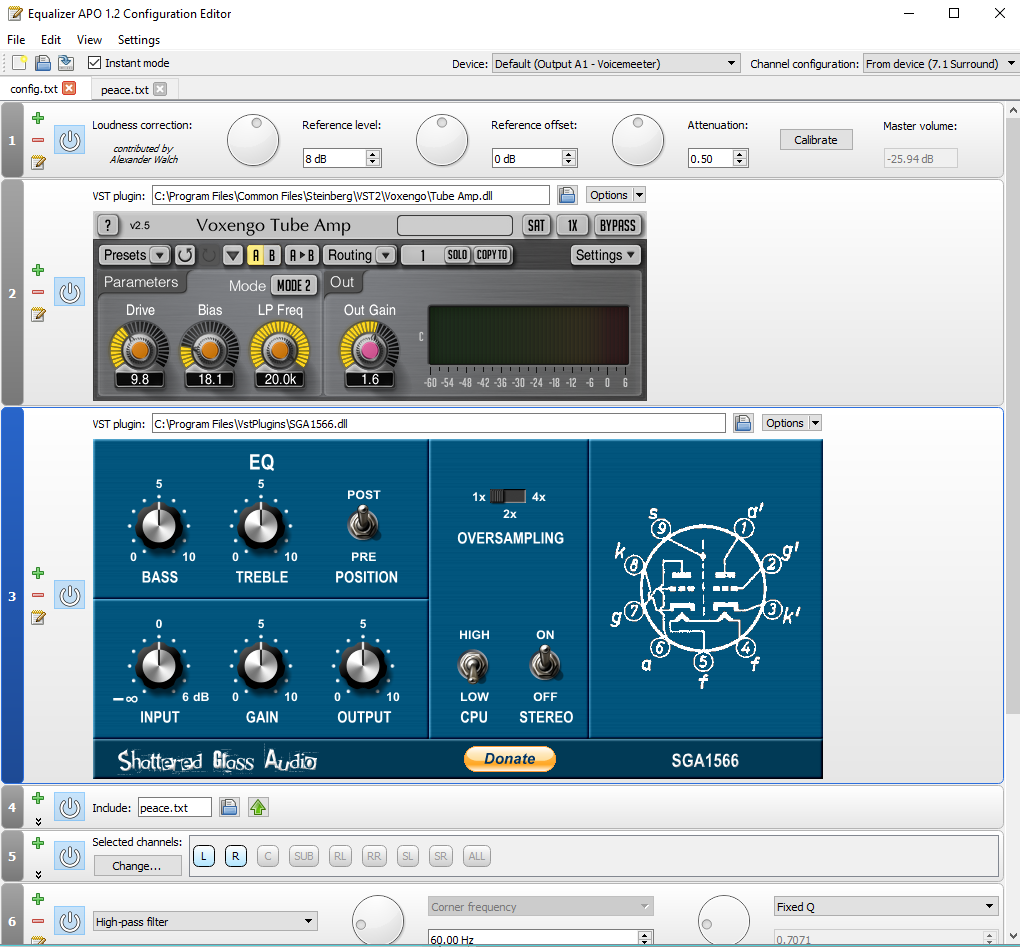Audacity VST Enabler is a program that allows the VST plugins to work. Visual Studio Technology (VST), on the other hand, is a plug-in software that adds several effects in an audio recording and editing tool.

Voicemeeter is Audio Mixer Application endowed with Virtual Audio Device used as Virtual I/O to mix and manage any audio sources from or to any audio devices or applications. For first use, it's highly recommended to follow user manual step by step, especially step ZERO of the documentation. Voicemeeter 1.0.7.4 (ZIP Package). Using Voice Meeter Banana for Lets Play/Streaming – Houser. VoiceMeeter Video Manual – an in-depth how-to tutorial – Terry Leigh Britton (very extensive 1 hour tutorial using the basic VoiceMeeter program, which has fewer default input/outputs and no recording functionality but works basically the same).
It provides a variety of functionalities including virtual instrument sounds. However, VST enabler is no longer required for Audacity’s latest version. You can now download the VST plugins and directly add it to the Audacity audio recorder to enable the effects.
If you are using an older version of Audacity (e.g. v. 1.3), you might need to get the Audacity VST Enabler. But it has been removed in the Audacity’s official site since the release of the newer version. The only choice you can have is to update your Audacity and download the VST plugins.
To check the version of your Audacity, go to the Help menu and click About Audacity. Or, you can update it to the latest version by clicking the Check for Updates and it will redirect you to the download page. Please see the article on How to Use Audacity for a complete guide.
Contents1 Installing Audacity VST PluginsInstalling Audacity VST Plugins
Since Audacity supports thousands of plugins, VST provided an array of plugins that you can get for free. These plugins are available in Audacity for Windows, Audacity for Mac, and Audacity for Linux. Here’s a tutorial on how you can install them.
Download VST for WindowsDownload VST for Mac OS XStep 1. Download the VST plugin you want to add to your Audacity. you can click on any of the buttons above, depending on the operating system that you are using.
Step 2. Open the Download folder on your computer and find the plugin you downloaded. Step 3. Extract all the files or install the plugin.
Dblue glitch vst. Each effect has a few parameters, for example the retrigger effect has knobs for speed, length and pitch.
Step 4. Find the .dll file on your computer and copy it to the Audacity’s directory. To open the directory for Audacity, just go to the Program Files on your computer, find Audacity and locate the Plugins folder. Paste the copied file inside the plugins folder to add the plugins to the library.

Step 5. Bod free vst. Open the Audacity and click on Effects, the plugins will appear in that tab. If you can’t find the downloaded plugin, click the add/remove plugin command under the Effects menu.
Voicemeeter Plugins
Step 6. Look for the plugin you have downloaded. Enable it and click OK.
To see if the plugin you have downloaded works
- Open the Audacity application on your computer.
- Record an audio or import a prerecorded sound from your computer.
- Select the part of the audio you want to enhance.
- Go to the Effect menu and click the effect you want to add.
- Some of the effects can be added automatically on your project once you click them. Some require you to set the parameters for the effects to work.
Note: If you want to add Audacity plugins, you must see first if these are compatible with your device or operating system. Otherwise, it will not work even if you follow the installation process correctly. Some of the VST plugins you can get are:
Chart of the best free realistic instrument pluginsThis table includes all of the free realistic instrument VST plugins that are mentioned in the article below. Plugin NameAvailable Plugin FormatsSupported OSLABS64 & 32-bit VST, AAX, and AUWindows & MacCloudrum64 & 32-bit VST, AAX (Mac only), and AUWindows & MacSonatina Orchestra64 & 32-bit VSTWindowsSSD5 Free64-bit VST, AAX, and AUWindows & MacVirtual Playing OrchestraWAVE & SFZWindows & Mac(Bonus) Taiko Drum SamplesWAVE & SFZWindows & Mac1. Free 64 bit vst instruments.
- Antares Auto-tune – best for pitch correction.
- Antress Modern plugins – use to create a fake stereo
- Dominion v.1.2 – to control the signals for attack and sustain phase
- DtBlkFx – for manipulating frequency and harmony
- Acon Digitals – best for livening the vocal sound
Conclusion
It is simple to add effects to produce good sound. You just have to be resourceful and creative on using these free plugins. With the latest version of Audacity, you need not get the VST Enabler. All you have to do is find the plugins, download them, and add them directly to Audacity’s library.
A plug-in is a piece of software that adds a specific functionality to Cubase. The audio effects and instruments that are used in Cubase are VST plug-ins.
Use Vst With Voicemeeter
VST effect or VST instrument plug-ins normally have their own installation application. Read the documentation or readme files before installing new plug-ins.
When you scan for newly installed plug-ins or relaunch Cubase, the new plug-ins are shown on the VST effect or VST instrument selectors, respectively.
Voicemeeter Vst Host
Cubase Choir vst free 64 bit. comes with a number of effect plug-ins included. These effects and their parameters are described in the separate document “Plug-in Reference”.